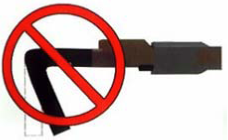Introduction#
We are living in the age of data. Between millions of tweets and shares of photos, music, and video, the amount of global digital information created has grown sixfold in the past 5 years to nearly 6 zettabytes in 2014. And data consumption continues to grow every minute thanks to smartphones, social media, video streaming, and big data.
With this exponential growth of data and the increase of applications that can take advantage of real-time massive data processing the market demands faster and more efficient interconnect solutions. NVIDIA InfiniBand and Ethernet solutions provide an ideal solution for environments requiring high throughput and low latency.
This guide provides an overview of the different types of Ethernet and InfiniBand cables that exist today, suggests how to survey and understand connectivity requirements between systems in a data center to speed cable installation while maximizing maintainability, and discusses the methods and procedures used by NVIDIA teams around the world to successfully stand-up massive data centers.
Target Audience#
The target audience spans a wide range of technologists including IT managers, system architects, network architects, network administrators, and technicians who must design, deploy, manage, or maintain data center networks.
Document Conventions#
Note
Note: Identifies important information that contains helpful suggestions.
Caution
Alerts to a risk of personal injury, system damage, or loss of data.
Warning
Warns that failure to take or avoid a specific action might result in personal injury or a malfunction of the hardware or software. Hazards involved with electrical circuitry and be familiar with standard practices for preventing accidents before you work on any equipment.
Warnings#
Warning
These warnings apply to InfiniBand connectors.
Do not step on the cable or connectors.
Do not drop the cable or connectors from any height.
Do not drag the cable or connectors over any surface.
Warning
These warnings apply to cables.
Do not use cable/zip ties or any other hard fastener.
Do not staple the cables.
Do not insert connectors into connector receptacles by pushing on the cable.
Do not pull cables.
Do not bend cables beyond the recommended minimum radius.
Do not attempt to squeeze/force cables in a space that is too small.
Do not route cables through pipes, holes, or unserviceable apertures.
Do not drape cables for a length more than two feet (60 cm).
Do not compromise on routing.
Common hazards to avoid when dealing with cables are shown in Figure 1.
Figure 1. Problems to avoid

Do not kink the cable.

Do not over-bend the cable behind the connector.

Do not twist the connector.